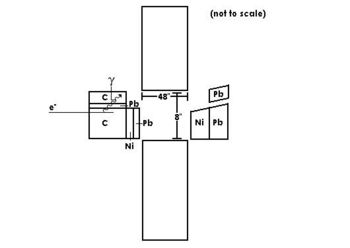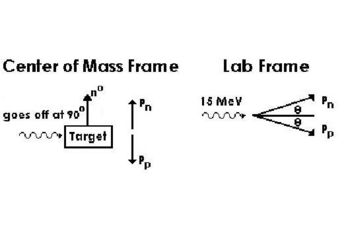Difference between revisions of "Notes for the July 11th, 2008 Meeting"
Jump to navigation
Jump to search
| Line 23: | Line 23: | ||
<math>2 \cdot \sqrt{p_n ^2 + m _n ^2} = 15 MeV = m _d | <math>2 \cdot \sqrt{p_n ^2 + m _n ^2} = 15 MeV = m _d | ||
</math> | </math> | ||
| + | |||
| + | |||
| + | <math>p _n = [\frac{15 MeV + m _d}{2}]^{2} - m _n ^{2}</math> | ||
| + | |||
| + | <math>p _n = [\frac{15 MeV + 1875.6 MeV}{2}]^{2} - 939.6 MeV ^{2}</math> | ||
| + | |||
| + | <math>p _n = 104 MeV</math> | ||
| + | |||
| + | KE = 5.3 MeV | ||
| + | |||
| + | β = .1 | ||
| + | |||
| + | θ = 85.6° -> Means that since they're moving forward, the angles will be pushed forward to be less than 90°. | ||
Revision as of 10:09, 16 July 2008
= we'll have 2.5"
= tan(1.95)
radiator distance - collimator
x = 73.4" = 186.5 cm
radiator is 73.4" - 48" upstream of the wall
Something someone needs to do:
Look up which has the highest neutron production energy thresh hold: Cu, Zn, Ni
KE = 5.3 MeV
β = .1
θ = 85.6° -> Means that since they're moving forward, the angles will be pushed forward to be less than 90°.

